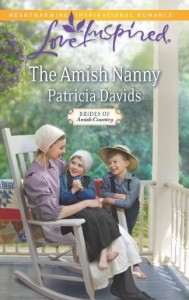Patricia Davids was born in the farming and ranching country of central Kansas. She had an idyllic childhood filled with horseback riding, softball games, fishing and swimming in the creek. As the only girl with four brothers, it was inevitable that she grew up to be a tomboy. Her love of books began early in life. Nancy Drew, Trixie Beldon, The Hardy Boys and Zane Grey were but a few of the favorites she collected.
After high school, Pat attended Kansas State University and went on to earn her nursing diploma at St. Joseph’s School of Nursing in Wichita, Kansas. It was there that a classmate asked her to write a letter to a lonely sailor. Pat had no idea her pen pal would become the love of her life. After exchanging letters for several months, Pat met Dave face to face on St. Patrick’s Day in 1973. It wasn’t exactly love at first sight, but it was close. The following year they were married. Pat followed her sailor to the U.S Submarine Base in Groton, Connecticut, and eventually they were joined by daughter, Katherine.
On their return to Kansas two years later, Pat and her husband both entered the medical field. Pat as an RN in the NICU and Dave as an X-ray technician. Pat’s work eventually expanded to include being a flight nurse on the neonatal transport team. As part of the team, she helped transport infants in need of critical medical services to her hospital. Besides taking care of babies, Pat also worked as a home health nurse. Her stories of life in the air and on the ground were always sure to bring a laugh to her co-workers and family.
You can take a girl out of the country, but you can’t take the country out of the girl. Pat’s love of the outdoors and her husband’s interest in hunting and archery lead them both to compete in the sport of archery at the local, state and national levels. In 1992, Pat and Dave won the Kansas State 3-D archery championships in their respective classes. Throughout her busy life, she remained a devoted reader, but often thought that she might like to write a novel — when she retired.
After her daughter left home, Pat’s love of reading evolved into a serious desire to write. In 1996, she began work on her first novel. It proved to be more difficult than she expected. In researching how to write, she discovered a local writers group and soon joined both the Wichita Area Romance Authors and the national organization, Romance Writers of America. Pat credits the help of the wonderful members of both organizations with teaching her the craft of writing and giving her insight into the publishing industry.
Still, after seven years of writing and three completed manuscripts, all she had to show for her efforts was a pile of rejection letters. Then, in the summer of 2002, Pat met Deborah Raney, a fellow Kansas author, and learned about the growing inspirational romance market. It was a lightbulb over the head moment. Pat revised her third book for yet another time and the rest is history.
When I asked Pat about her daily writing process, she said the following:
What time of day do you write best?
My best writing time is from 10 PM until 2 AM. Yes, I’m a night owl.
How many hours per day do you write?
When I have a deadline looming, I write 6 to 8 hours a day. I have been known to write for 48 hrs. straight with only a couple of 30 min. naps. I don’t recommend this but I have the most fun when I’m in that kind of writing trance. That’s purely new writing time. The business part of my career takes up 1 to 2 hrs. each day with blogging, answering emails and working on edits, AAs or revisions.
When writing on deadline, what is your writing process?
I always have a deadline looming, thank the good Lord. If it’s two months away I write 1-2 hrs. each day. At one month I kick it up to 4-6 hrs. Last two weeks, 6 to 8 on average.
Do plan your novel, or just let it happen?
I’m a plotter.
How do you get started on a novel?
I need to decide on my characters’ names, then the hook for the story, (secret baby, enemies to lovers, reunion, opposites attract, that kind of thing) then I decide what kind of personalities my characters have. I can then lay out their goals, motivations and their conflicts. After that, I can see how the story will end with their conflicts resolved. Once I have a good grasp of where the story will go, I can decide where to start it. This process takes anywhere from one to three weeks of brainstorming to make it gel. Then, I’m ready to write a synopsis. It is never as easy as this sounds. I had one book I actually wrote backwards because I couldn’t see a starting place or where their goals would change. (The Farmer Next Door) I’ve had books that I have hated every word I wrote in them. (A HOME FOR HANNAH which won the RT Reviewer’s Choice Award for Best Love Inspired Novel of 2012)
What inspires you to write?
This isn’t a hobby for me, it’s my job. No matter how much I love your job, it’s still hard work. It’s how I earn my living. I can’t wait for the Muse to inspire me to write. I write 3 to 4 books a year by putting my behind in my office chair and my fingers on the keyboard.
What is your revision process?
I’m always looking for the weak links in my story.
Where did you get the idea for the novel you are working on now?
The idea for my current novel came from thinking about how to make a man who is used to being in charge, who is strong and confident into someone who needs complete care. He needs to be humbled and have his eyes opened to what is good around him. So, I blinded him in an explosion that also burned his hands. Now, he is totally lost. A very kind and generous woman is going to show him how God uses tragedy to change us for the better.
Do you use any visuals–pictures, timelines etc–to help you write?
I don’t use visuals. My readers don’t have visuals so why should I?
How do you deal with the “murky middle” when you are writing a novel?
If the conflict between the characters is strong and not based on misunderstand or something shallow and easily overcome, then there is no murky, sagging middle. Also, adding humor to the story helps it move along.
What is your revision process?
I revise as I write. I always read and revise what I wrote the day before. Often, I start at the first page and read and revise the entire work before I do new writing. I’ve tried writing a first draft without stopping and I can’t do it. I’m a chronic fixer.
Are you a member of a writing critique group
I belong to a local writers group. I encourage anyone who thinks writing is something they would like to do to join one. I also have a critique group. We meet weekly to monthly depending on our schedules and I trust their judgment. If they say it’s not working, it isn’t. I don’t need people to tell me what they like about my writing. I need them to tell me where my weakness are so I can make it a better story.
How has being a published author changed your writing process?
Since becoming published, I have learned a ton about the craft of writing from workshops and on-line classes and articles. I discovered the secret of being a successful writer is not to write one great book, but to write 20 or 30 pretty good books. There is always room for improvement. Never forget that it isn’t about you as the writer. It’s about your readership. Give people what they enjoy reading and they will buy your next book. Give it to them as fast as possible, and your popularity will soar.
What advice do you have for new writers?
Don’t become a writer to earn a living. Have a day job first. It takes years to build a big enough readership to support you. Write because you love it. The rest will follow if you work at writing the way you would work at any job. The more you put into it, the more you will get out of it. Trust God to make it happen, but do the work.

